Viburnum prunifolium (common name blackhaw, blackhaw viburnum, smooth blackhaw or stag bush), is a native small tree with edible fruit. It blooms in late spring in eastern North America, west to eastern Kansas, and south to Alabama and Texas.
Viburnum prunifolium is generally hardy in USDA Hardiness Zones 3 to 9.
This native plant belongs to the Adoxaceae family, which also includes other viburnum species. Blackhaw viburnum is often planted for its ornamental features. Its fragrant white flowers, attractive berries, and fall foliage colors make it popular in landscaping.
Traditionally, certain parts of blackhaw viburnum were used in Native American and herbal medicine practices. The bark was used for various purposes, including addressing women’s health issues.
What Are You Foraging For Right Now?
We're thrilled to hear your ideas. What would you like to submit today? Feel free to share your thoughts and experiences with us.
Are blackhaw berries edible?
Yes, the berries of blackhaw viburnum are technically edible, but they are not commonly consumed due to their bitter taste and astringent qualities.
The bitter taste and astringency of blackhaw berries can make them unpalatable or unpleasant to eat compared to other more flavorful and palatable berry options (like nannyberry, serviceberry or bunchberry).
However, if you’re interested in trying blackhaw’s edible fruit, here are some steps you can take:
Harvesting: Wait until the berries are fully ripe and have turned a dark blue-black color. Ripe berries are generally softer and easier to remove from the stems.
Preparation: Here are a few methods to try:
- Fresh: Simply eat the ripe berries directly from the plant. Keep in mind that they might still have a bitter and astringent taste.
- Cooking: Cooking the berries might help reduce their bitterness. You can try adding them to recipes that call for tart or sour ingredients, such as jams, jellies, or chutneys. Cooking could also help break down some of the compounds that contribute to the bitterness.
- Sweetening: You can try sweetening the berries by adding them to dishes that contain sweeteners like honey, sugar, or syrup. The added sweetness might help balance out the bitterness.
What does blackhaw fruit taste like?
The taste of blackhaw fruit is generally described as being quite bitter and astringent. The bitterness and astringency are due to the natural compounds present in the berries.
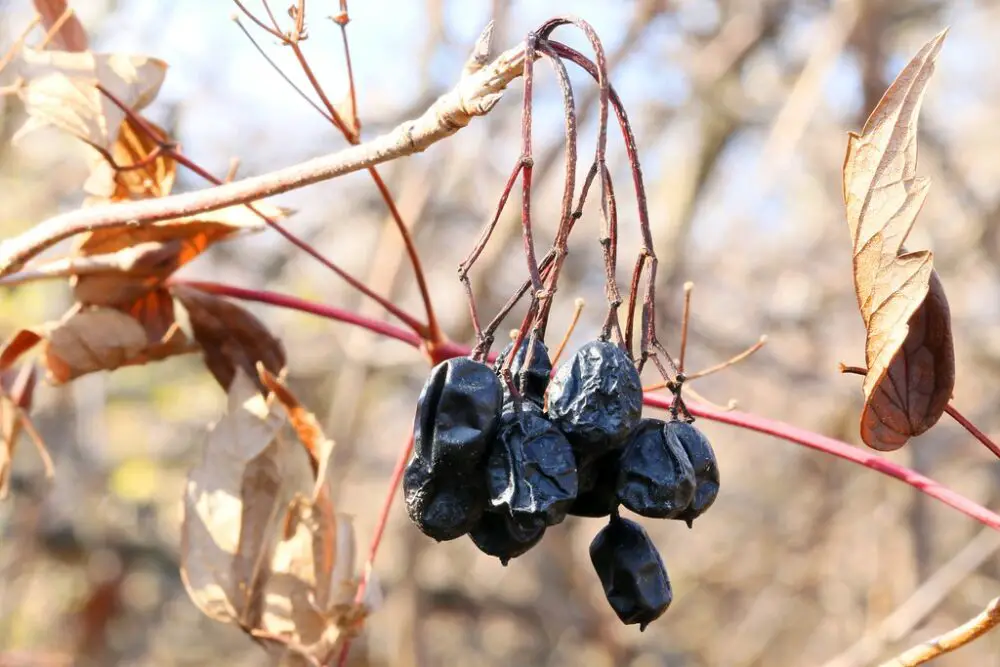
What else is Viburnum prunifolium used for?
Blackhaw has been a popular native shrub as far back as when the Native Americans discovered it. The Cherokee and Delaware are no strangers to the uses and medicinal benefits of the late spring blackhaw.
Homeopathy
In homeopathy, Viburnum prunifolium is commonly used for a range of women’s health issues, including menstrual discomfort, pregnancy-related concerns, and uterine conditions.
Here are some of the historical medicinal uses of Viburnum prunifolium:
Women’s Health: Blackhaw viburnum has a long history of use for women’s health, particularly during menstruation and pregnancy. Some of its traditional uses include:
- Uterine Tonic: It was believed to have uterine tonic properties, supporting uterine health and function.
- Menstrual Discomfort: Blackhaw was used to alleviate menstrual discomfort and pain.
Pregnancy Support: The bark of blackhaw Viburnum was used historically to address issues related to pregnancy:
- Pregnancy Cramps: It was believed to help alleviate cramping and discomfort during pregnancy.
- Labor Support: Some traditional practices involved using blackhaw to support a smooth and comfortable labor process.
Digestive Ailments: Blackhaw viburnum was used as a mild astringent, and its bark was employed to address certain digestive issues.
Astringent Properties: The astringent qualities of blackhaw bark were sometimes used in traditional applications to help tone and tighten tissues.
Attracting Wildlife
But it’s not only humans that recognize the benefits of this woody plant type. Viburnum prunifolium is the perfect foraging material for pollinators like bees, butterflies, and birds.
If you’re lucky enough to work with a big wide window that looks out onto the flower clusters of this large shrub, you may find a steady stream of visitors as the birds chomp down on the dark blue-black, berry-like drupes.
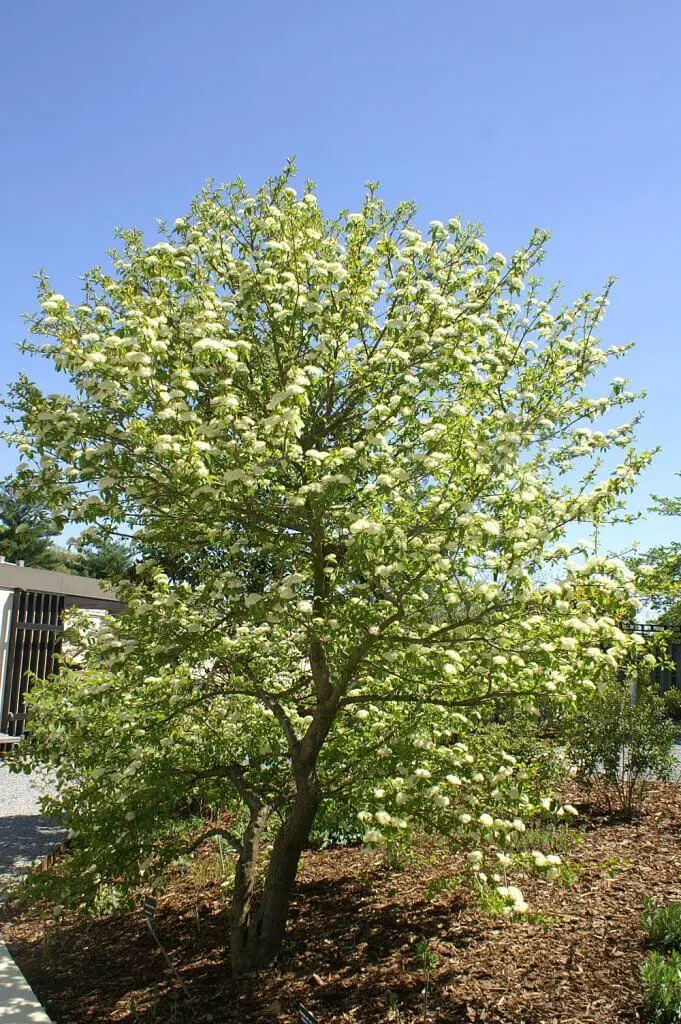
How do you identify blackhaw?
Identifying blackhaw involves examining various features of the plant, including its leaves, flowers, berries, and overall growth habit.
Here’s a guide to help you identify blackhaw:
1. Leaves:
- Blackhaw leaves are simple, alternate, and elliptical in shape.
- They have finely toothed margins.
- The leaves are typically dark green in color and have a glossy appearance.
- In the fall, the leaves can turn shades of red, orange, or purple.
2. Flowers:
- Blackhaw produces clusters of small, white flowers in the spring.
- The showy flowers are often fragrant and attract pollinators such as bees and butterflies.
3. Bloom Time:
- In most regions, Blackhaw Viburnum blooms in the late spring to early summer, usually between April and May.
4. Berries:
- After flowering, Blackhaw develops small, oval-shaped drupes.
- The berries start off green and gradually ripen to a blue-black color.
- They are typically found in clusters and are enjoyed by birds and wildlife.
5. Bark:
- The bark of older branches can become scaly and gray-brown.
6. Growth Habit:
- Blackhaw is a deciduous shrub that can grow to a height of around 10 to 15 feet (3 to 4.5 meters) and has a similar spread.
- It has a rounded to vase-shaped growth habit.
7. Habitat:
- Blackhaw viburnum is native to eastern and central North America.
- It is often found in woodlands, forest edges, and along stream banks.
8. Leaf Arrangement:
- Leaves are arranged alternately along the stems.
9. Leaf Attachment:
- The leaves attach to the stems by short petioles.
Instead of simply stumbling over this woody plant in springtime, you also need to know what Blackhaw looks like.
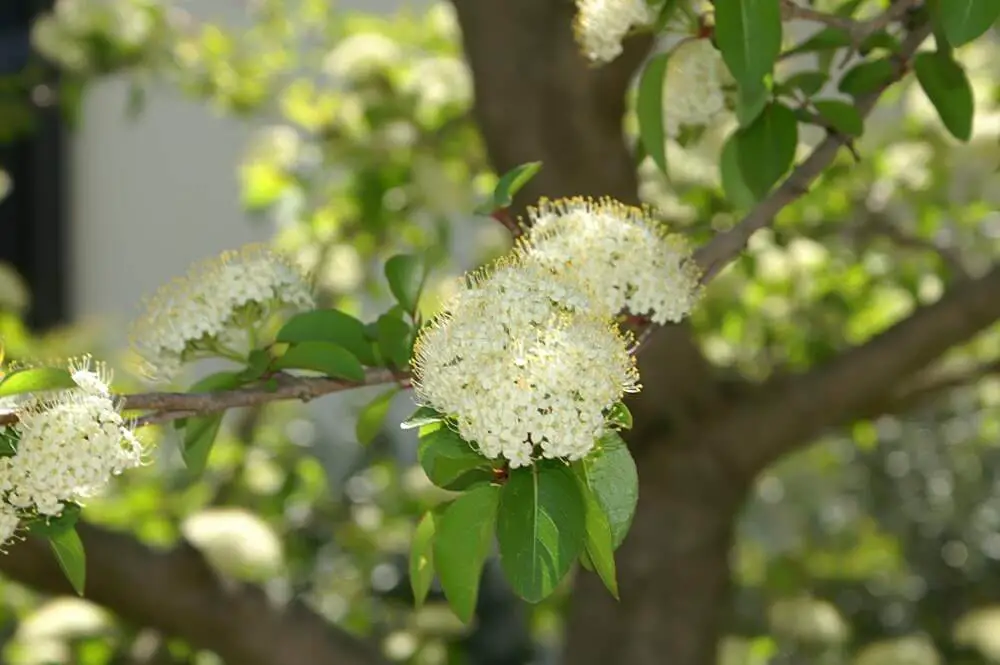
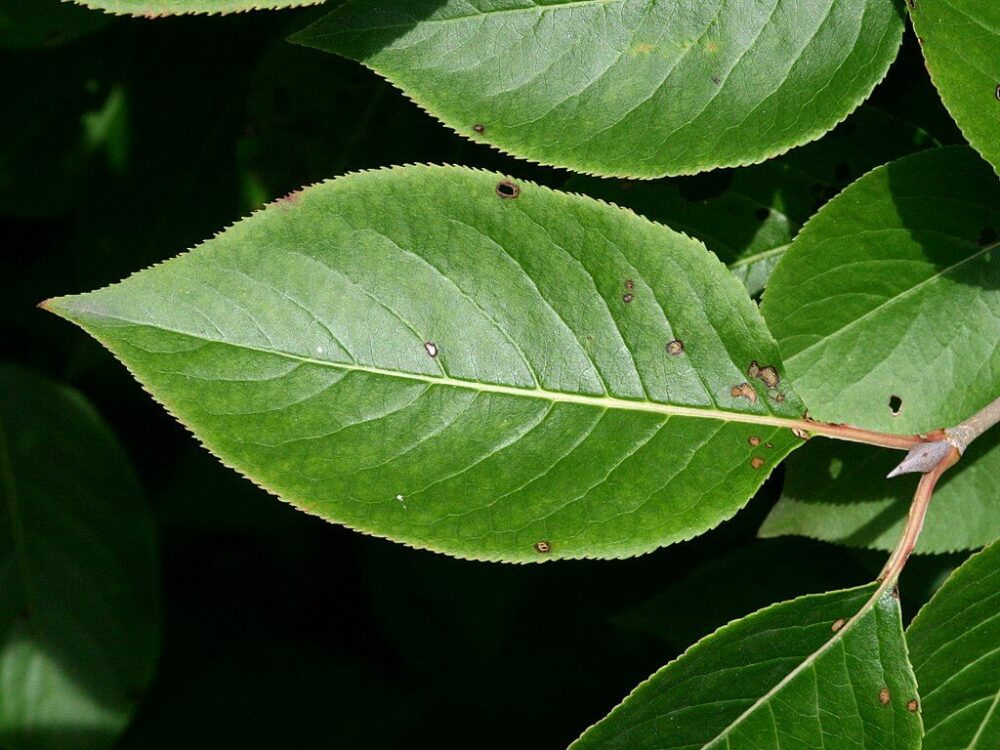


What is the range of Viburnum prunifolium?
Viburnum prunifolium is native to eastern and central North America. Its native range spans a large portion of the United States, extending from New York and Pennsylvania in the northeastern region to Florida in the southeastern region, and westward to parts of Oklahoma and Texas. It’s also found in the Midwest, including states like Missouri, Illinois, and Arkansas.
Here is a rough outline of the native range of Viburnum prunifolium:
- Eastern United States: From New York and Pennsylvania southward through the Appalachian region, including states such as West Virginia, Virginia, North Carolina, Tennessee, and Georgia.
- Southeastern United States: Throughout the southeastern states, including South Carolina, Alabama, Mississippi, and Florida.
- Central United States: Extending westward through parts of Arkansas, Missouri, Oklahoma, and Texas.
How fast does Viburnum prunifolium grow?
Blackhaw viburnum’s growth rate is not rapid. It typically grows at a slow to moderate pace, especially in the early years of its growth.
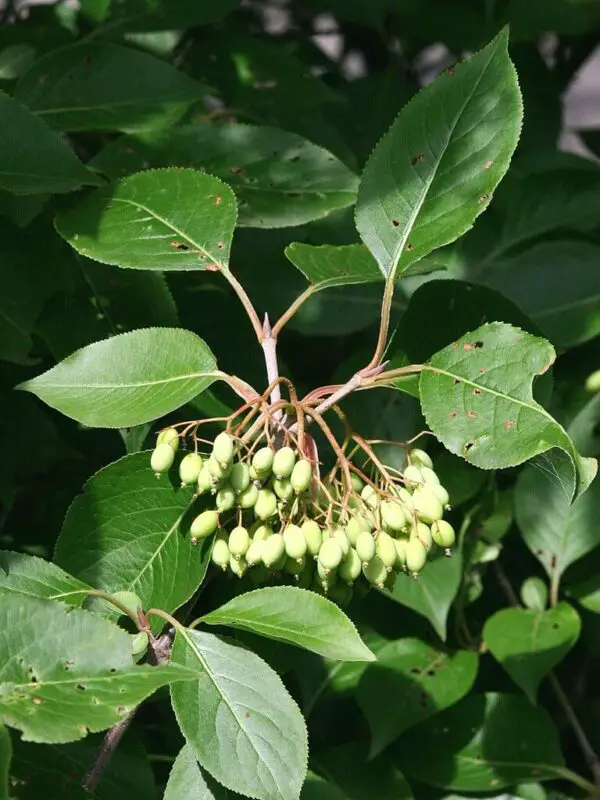
Is Viburnum prunifolium deer-resistant?
Yes, Viburnum prunifolium is considered to be deer-resistant.
Foraging for Blackhaw berries
If you’re interested in foraging blackhaw berries, here are some tips to consider:
- Ripe Berries: Wait until the berries are fully ripe before harvesting. Ripe berries are typically dark blue-black in color and are softer to the touch.
- Taste Test: Before consuming a significant amount, taste a small portion of the berry to gauge its flavor and astringency. The bitter taste might make them unpalatable to many people.
- Preparation: If you find the berries palatable or are interested in experimenting with them, you can try different preparation methods, such as cooking or sweetening, to mitigate their bitterness.
- Moderation: If you decide to consume blackhaw berries, do so in moderation. It’s important to remember that individual reactions to taste and texture can vary.
- Harvest Responsibly: Harvest only a small portion of the berries, leaving plenty for wildlife that rely on them for food.
- Habitat: Harvest from areas where the plant is abundant and healthy. Avoid harvesting from polluted or contaminated sites.
What to read next: Foraging Chokecherry
Getting into the great, wet outdoors in search of edible plants, herbs, fruits and fungi is one of Sarah’s favorite outdoor pursuits. She thinks there’s nothing better than combining her passion for hiking with the start of the foraging season. Sarah’s definitely not afraid of a little rain and dirt, it’s all part of the fun.

